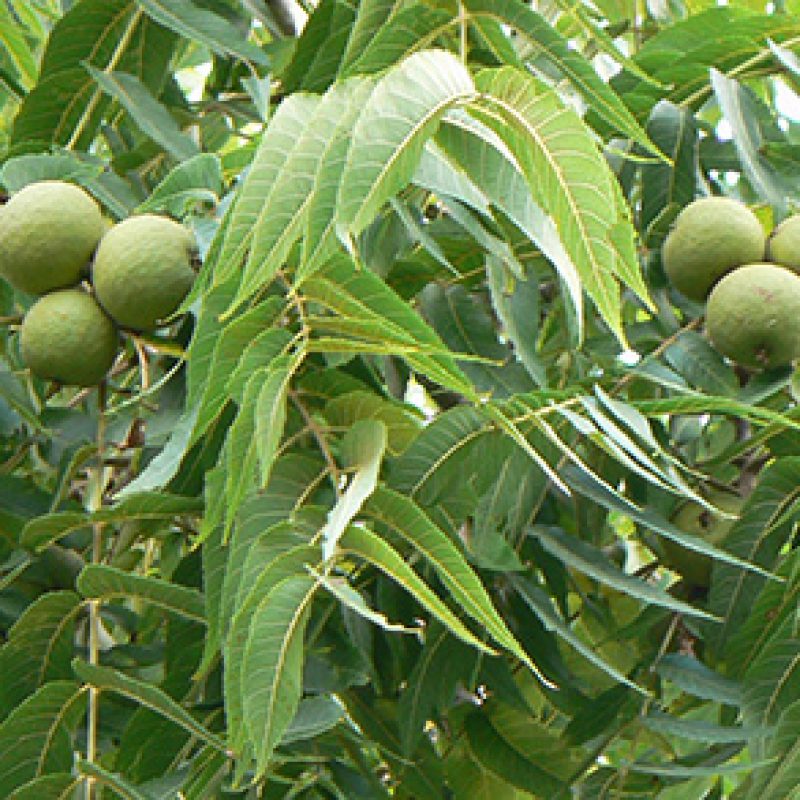Black Walnut
Scientific name
Juglans nigra
Description
The Black Walnut is a large deciduous tree species, reaching heights of 25-38m. It has a low, wide-spreading round crown composed of stout branches on a short trunk. This species produces a deep root system supported by lateral spreading secondary roots. It is an excellent tree for shoreline rehabilitation and erosion control. The chemical compound juglone is secreted from its roots and decaying leaves, which prevents many other plant species from establishing within the spread of its root system. The Black Walnut is naturally found along riparian zones of lakes and rivers within Southern Ontario. This species produces compound leaves which turn yellowish-green during autumn. Tiny, green, walnut-like flowers appear during the spring, turning into walnuts during the summer. Then in the fall, the walnuts ripen and drop. The Black Walnut is valued for its woodworking potential due to its attractive grain and pliability.
Planting conditions
Plant in full sun to part shade. Grows in a variety of soils, but prefers deep, fertile, well-drained and moist soils, especially neutral loamy types.
Details
-
Plant height:
- Any
- Over 3m
-
Moisture level:
- Dry
- Normal
- Moist
- Drought Tolerant
- Flood Tolerant
-
Light conditions:
- Full sun
- Partial sun
-
Soil type:
- Sandy
- Clay
- Rocky
-
pH:
- Normal
-
Depth:
- Potted
- Bareroot
-
Eco Zone:
- 3a
- 3b
- 4a
- 4b
- 5a
- 5b
- 6a
- 6b
-
Plant type:
- Tree
-
Height:
- 25-38m


